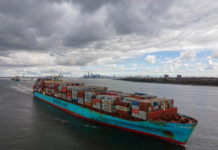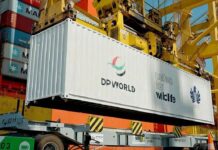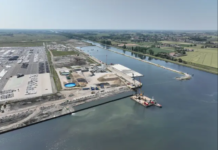
Casper, Phillips & Associates Inc. (CPA) has provided the Asyaport in Turkey with a crane base seismic isolation system named BASIS.
Built on nonlinear time history analysis (NLTHA), BASIS has been successfully installed and commissioned on two cranes that are in a major seismic zone in Turkey, as it has the ability to protect the crane main structure from damage, “even in contingency level earthquakes”.
The revolutionary anti-seismic system is installed between the sill beam and main equaliser beam, about four to five meters from ground level, depending on the crane’s size. It also includes two friction damper assemblies, two energy restoring device assemblies, a guiding device, and two friction damper locking devices.
Furthermore, the cranes have a 30.48m gantry span, 68m outreach, 20m back-reach, and 46.3m lifting height above the gantry rail.
Mike Zhang, the head mechanical engineer at CPA, said that the initial container crane isolation system includes dampers in both gantry travel and trolley travel directions.
“NLTHA analysis revealed that the base shear in the gantry travel direction varied within only 5% between a crane with a seismic isolation system and a crane without it. However, in the trolley travel direction, the base shear is significantly reduced by incorporating our seismic isolation system,” he explained.
Zhang added that ports located in seismic zones and crane manufacturers are both taking note of the system. Typically, he said, the ports specify the seismic requirements, while the crane manufacturers propose the isolation system. The port then makes the final decision on the proposed purchase.
The friction dampers are manufactured by the Canadian company, Quaketek, the restoring device is based on a Conductix-Wampfler buffer, while the mounting base and system assembly are provided by the crane manufacturers.
BASIS system, which received a Chinese patent in 2018, can be installed on new cranes or as part of a seismic upgrade of existing cranes. To verify the effectiveness of the system for different sizes of quayside cranes, CPA teamed up with Dalian Huarui Heavy Industry Group Co. Ltd. (DHHI) engineers.
Zhang outlined the benefits of BASIS, saying that “During a hurricane, the seismic system can be locked to prevent the dampers from slipping,” while “a special stowage pin assembly can also accommodate the crane movement during an earthquake, even during a microburst or stormwind when there are no tie-downs engaged.”





